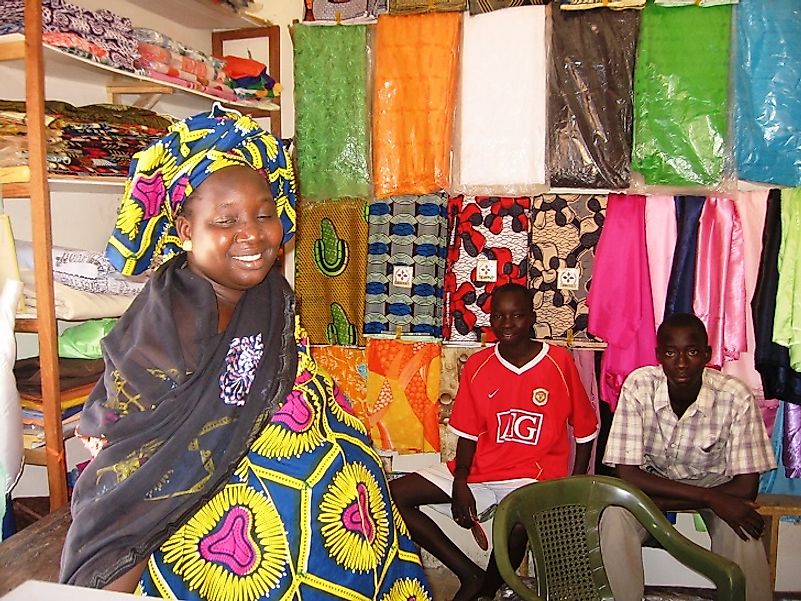Lowest Public Credit Registry Coverage Rates In The World

Sub-Saharan Africa is comprised of 30 developing countries, and is one of the world’s poorest regions. Although credit cards have been around for the last seven decades, the preferred method of doing business in the region is still by cash. In 2015, public credit registry coverage in the region was placed at 5.8% of the adult population in Sub-Saharan Africa. The percentage is one of the lowest in the world today.
The World Bank defines public credit registry coverage as including those firms and individuals who are debtors and are listed in the current data on credit outstanding, unpaid debts, and repayment history records in their respective countries. This covers borrowed money from banks and non-financial institutions including credit card debts. The coverage rates are declared as percentage of the adult population in a country or region.
Lowest Public Credit Registry Coverage Countries
In Sub-Saharan Africa, it is a rarity for an individual to be covered in a public credit registry system. Access to finance in Africa particularly is difficult due to lack of credit information registries and bureaus with dependable data on individuals and companies history of credit. Legal rights index and credit information index are important tools that facilitate public access to finance for small- and medium-sized enterprises (SMEs).
In Guinea-Bissau, only 0.1% of the adult population has public credit registry coverage. The government has been strengthening its Public Financial Management (PFM) to enable easier public access to credit and finance. The IMF also established a Rapid Credit Facility and an Extended Credit Facility to assist the public gain quicker access to credit and finance. Cashew production will gain from these developments in the country.
The country of Mali has similar figures, with only 0.1% of its adult populace having public credit registry coverage. Low levels and limited access to public credit and finance makes Mali a difficult place to get financing for SMEs. Although the country has a poverty reduction program, farmers still can not get agricultural financing. The government’s improved economic policy has done little to improve credit access.
Nigeria has a similarly limited proportion of its adult populace with public credit registry coverage, also at only 0.1%. The country has little or no transparency in its public access to credit and finance. However, Nigeria has a long history of community credit access that has kept its agricultural base going. These public credit access are in the form of microfinance, rural financing, and SMEs. Recent developments included more financial service providers but consumer protection was still lacking.
Ethiopia has around 0.2% of its adult populace listed with public credit registry coverage. The country has large public and private commercial banks, microfinance institutions to cover public access to credit. The current government project for Small and Medium Enterprise (SMEs) Finance Project for Ethiopia is to provide financial access for SMEs in the country. It also aims to increase female ownership of SMEs in Ethiopia.
Burkina Faso has a bit more of its adult populace with public credit registry coverage at 0.3%. Multinational pan-African banks dominate the financial system of the country although the cotton industry significantly affects their exposure to the industry. The government has the Fourth Growth and Competitiveness Credit (GCC-4) Operation Project which aims to end extreme poverty and increase the incomes of the poorest 40% in the country. Access to credit remains at a low 26% for the populace but microfinance access is steadily growing.
Several other Sub-Saharan African countries also have a low percentage of their respective adult populaces listed as having public credit registry coverage. Niger has only around 0.3% of its adult population with public credit registry coverage. The countries of Ivory Coast and Democratic Republic of the Congo, both have just 0.3% among their adult population who have public credit registry coverage. Djibouti fares slightly higher with 0.4% of its adult populace with public credit registry coverage. But, Senegal has slightly more with 0.5% among its adult populace with public credit registry coverage.
Lowest Public Credit Registry Coverage Rates In The World
| Rank | Country | Share of Adult Populace With Public Credit Registry Coverage |
|---|---|---|
| 1 | Guinea-Bissau | 0.1% |
| 2 | Mali | 0.1% |
| 3 | Nigeria | 0.1% |
| 4 | Ethiopia | 0.2% |
| 5 | Burkina Faso | 0.3% |
| 6 | Niger | 0.3% |
| 7 | Ivory Coast | 0.3% |
| 8 | Democratic Republic of the Congo | 0.3% |
| 9 | Djibouti | 0.4% |
| 10 | Senegal | 0.5% |











